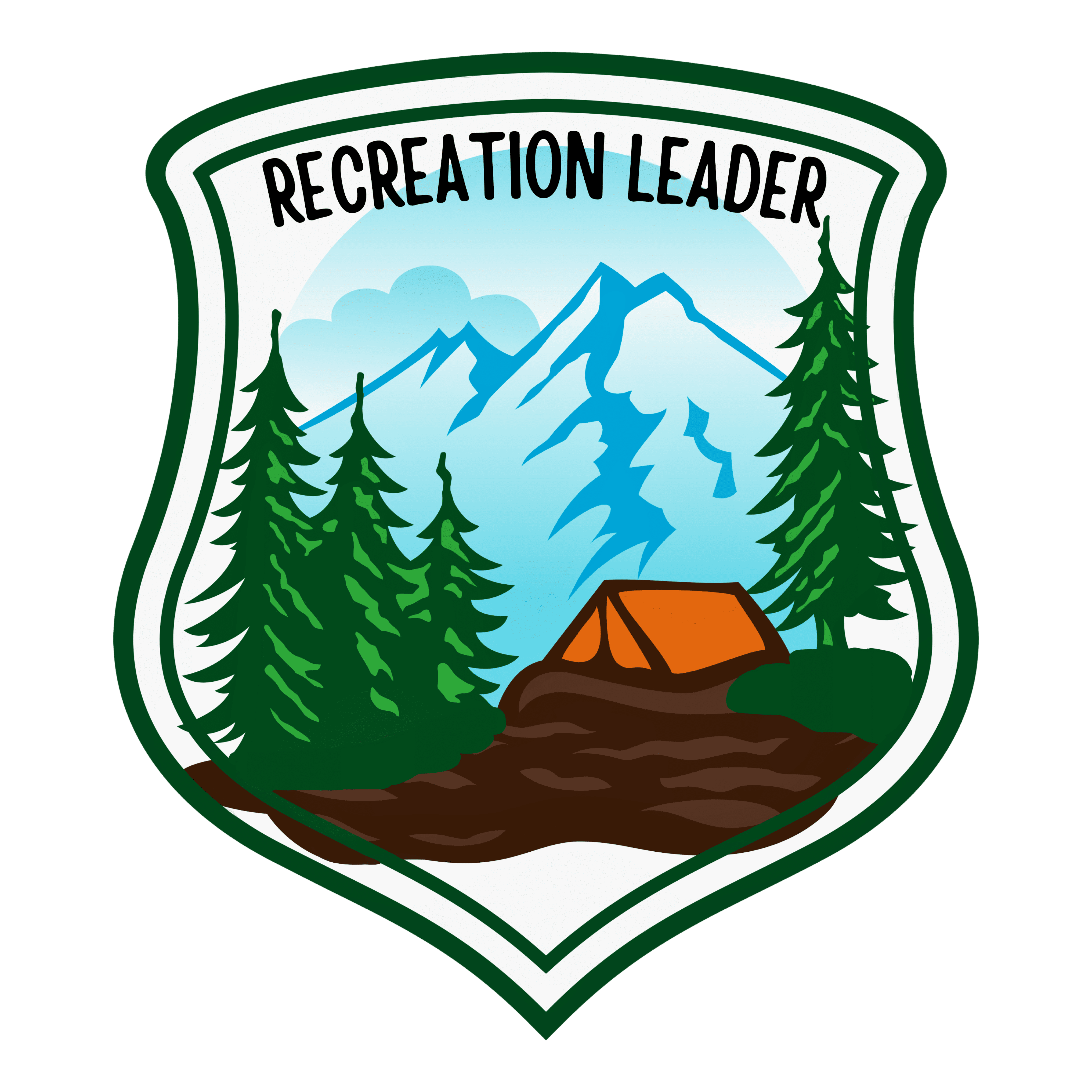Discover & Learn
See beauty in every step of the journey.
"Every piece of nature tells a story. Dive in, learn, and carry the knowledge with you on your next adventure."
Natural and Cultural History of Central Oregon
Explore the rich biodiversity and fascinating geology of this unique region
Central Oregon is a treasure trove of natural wonders, from its diverse wildlife and stunning landscapes to its fascinating geological features and brilliant night skies. Join us on a journey to discover the unique biodiversity and natural heritage of this remarkable region.
Throughout this guide, you'll learn about the various ecosystems, wildlife, and natural phenomena that make Central Oregon special. By understanding these elements, you'll develop a deeper connection to this place—embodying the "PThe "P" in our RESPECT ethos stands for "Pursue Connection to Place"" in our RESPECT Through Recreation ethos.
Pursue Connection to Place
Understanding the natural and cultural history of a place helps us form a deeper connection to the land. When we pursue connection to place, we develop gratitude and respect for the environment and all its inhabitants.
Through learning about Central Oregon's wildlife, plants, ecosystems, and geology, we become better stewards of the land and more mindful visitors and residents.
Fauna
Central Oregon is home to a rich diversity of wildlife. From majestic mammals and vibrant birds to fascinating aquatic species, the region's fauna reflects its varied habitats and ecosystems.
Central Oregon hosts a variety of mammals adapted to its diverse environments, from the high desert to forested mountains. The region's most iconic species include mule deer, elk, pronghorn antelope, and various small mammals.
Notable Mammals
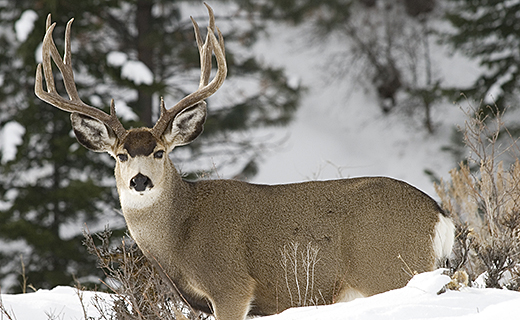
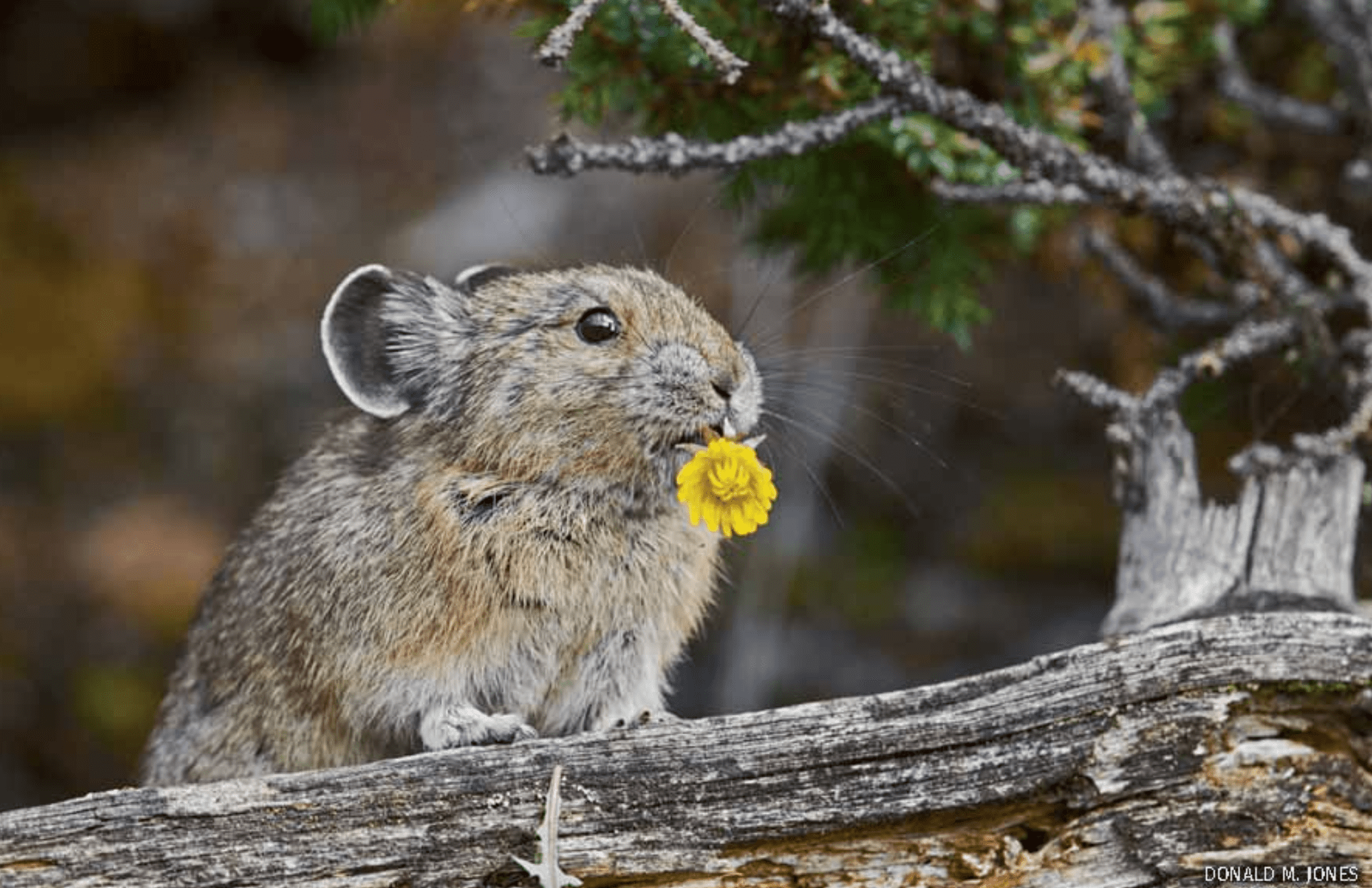
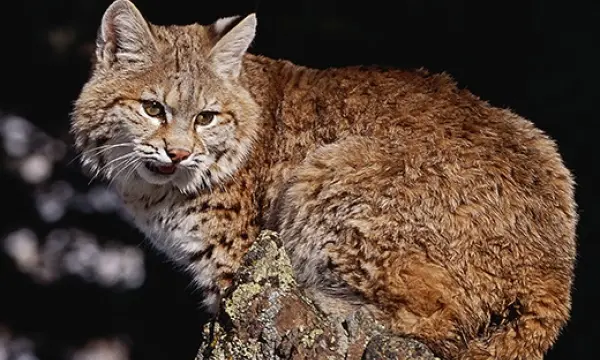
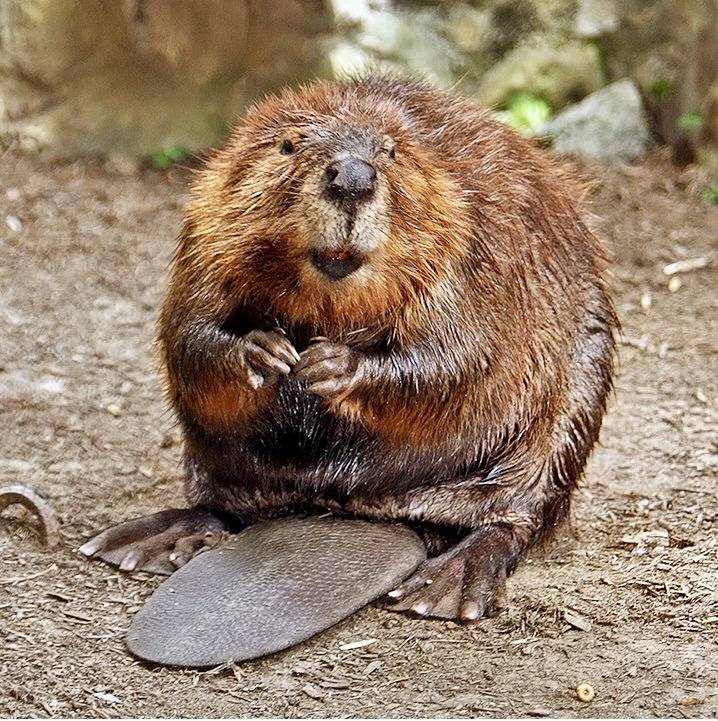
Habitat Areas
Central Oregon's high desert regions host unique mammals adapted to arid conditions. Notable species include jackrabbits, ground squirrels, badgers, and pronghorn antelope. The pronghorn is North America's fastest land mammal, capable of reaching speeds of up to 55 mph.
These mammals have evolved specialized adaptations to survive in the challenging desert environment, including water conservation mechanisms and the ability to travel long distances in search of resources.
The forested areas of Central Oregon, particularly in and around the Cascade Range, host a rich diversity of mammals. Black bears, cougars, elk, mule deer, and various squirrel species are common inhabitants of these ecosystems.
Forest mammals play crucial roles in seed dispersal, vegetation management, and as prey for larger predators. The complex forest ecosystems of Central Oregon support intricate food webs and ecological relationships.
Rivers and streams in Central Oregon create vital riparian corridors that support numerous mammal species. Beavers, river otters, mink, and various small mammals depend on these water-rich environments.
Beavers are particularly important as ecosystem engineers, whose dams create wetlands that benefit countless other species. Their activities improve water quality, reduce erosion, and create habitats for fish, amphibians, and birds.
Test Your Knowledge: Central Oregon Mammals
- Mule Deer
- Pronghorn Antelope
- Coyote
- Black Bear
Central Oregon is a bird watcher's paradise, with numerous species inhabiting its diverse ecosystems. From raptors soaring above the high desert to songbirds in the pine forests, the region offers ample opportunities for bird watching throughout the year.
Notable Birds
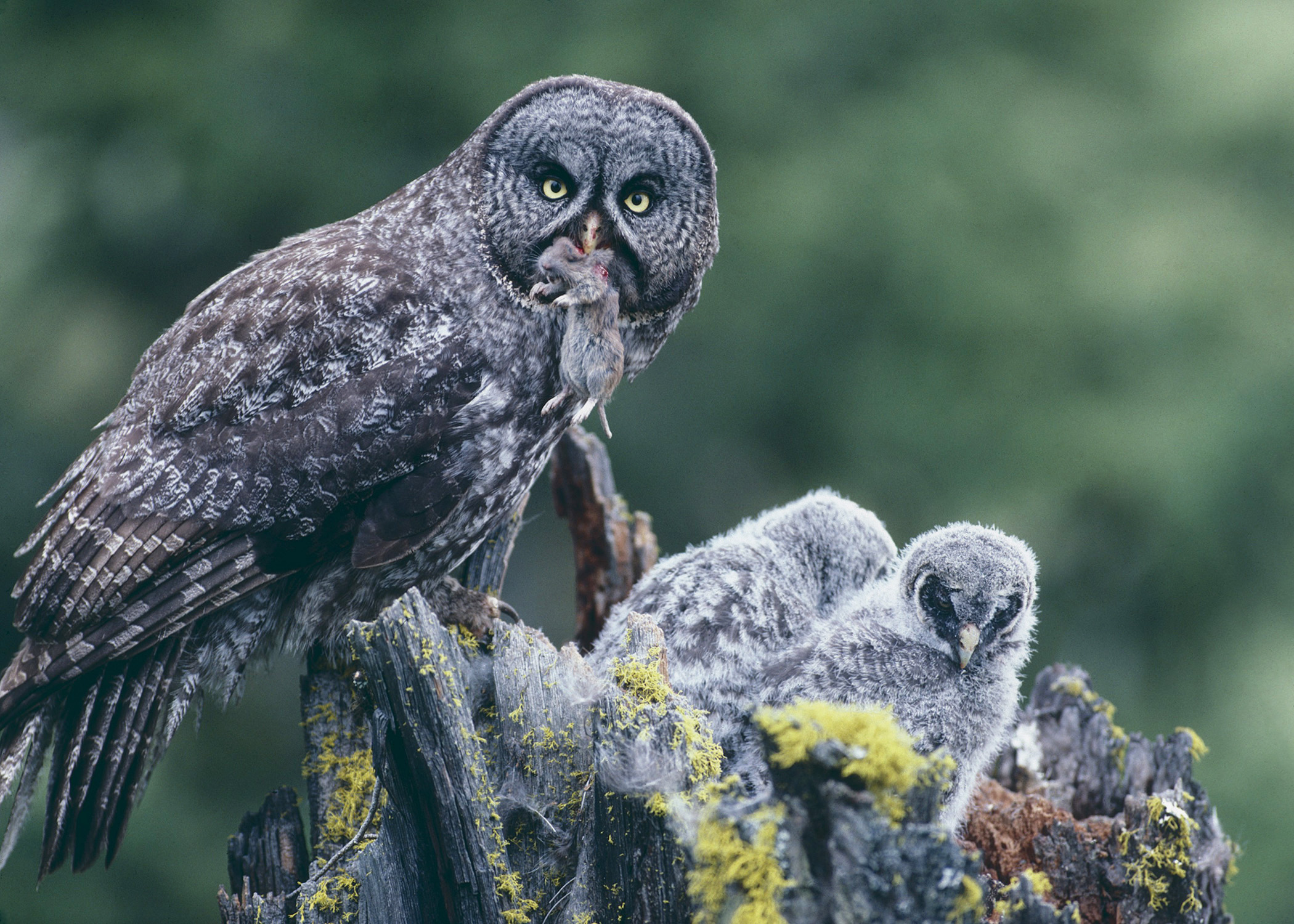
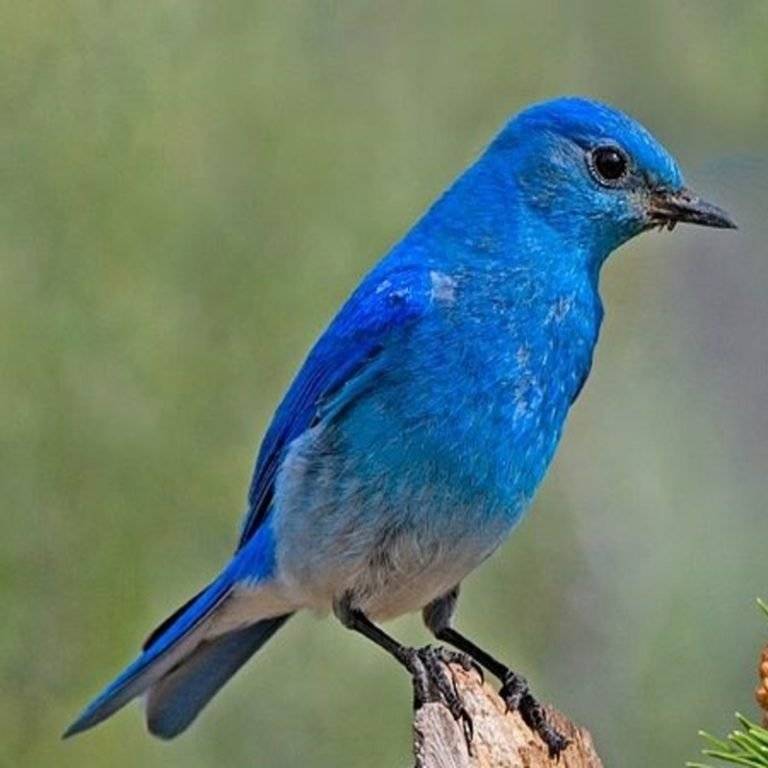


Bird Habitats
Central Oregon's arid landscapes host specialized bird species adapted to these challenging environments. Common residents include sage thrashers, Brewer's sparrows, sage sparrows, and greater sage-grouse—whose elaborate mating displays are one of nature's great spectacles.
Many of these birds have cryptic coloration that helps them blend into the sagebrush and juniper landscapes, providing camouflage from predators and allowing them to hunt or forage more effectively.
The Cascade Range and forested areas of Central Oregon support a rich variety of bird species. Look for pileated woodpeckers, mountain chickadees, Steller's jays, and numerous owl species including the northern spotted owl and great gray owl.
Different forest types—from dense mixed conifer to open ponderosa pine—attract different bird assemblages. Some species require old-growth conditions, while others thrive in forest edges or recently burned areas.
Central Oregon's rivers, lakes, and wetlands attract numerous water-loving birds. Great blue herons, sandhill cranes, a variety of ducks, and bald eagles are commonly seen in these habitats. During migration seasons, these areas become hotspots for birdwatching.
The region's wetlands serve as crucial stopover points for many migratory birds traveling along the Pacific Flyway. Areas like the Malheur National Wildlife Refuge provide essential habitat for these long-distance travelers.
Learn Bird Calls
Click on a bird to hear its distinctive call:
Spotted Towhee
Common in brushy areas
Great Horned Owl
Found throughout forests
White-headed Woodpecker
Pine forest specialist
The rivers, lakes, and streams of Central Oregon support a diverse array of aquatic life. From native trout to various amphibians, these water bodies are vital ecosystems that contribute to the region's biodiversity.
Notable Aquatic Species
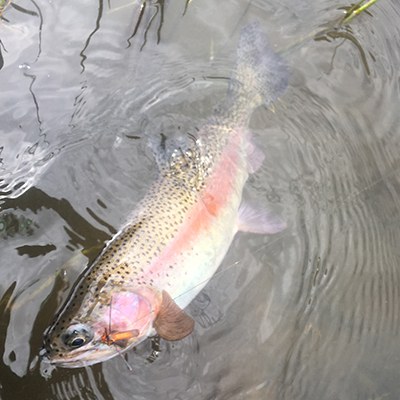
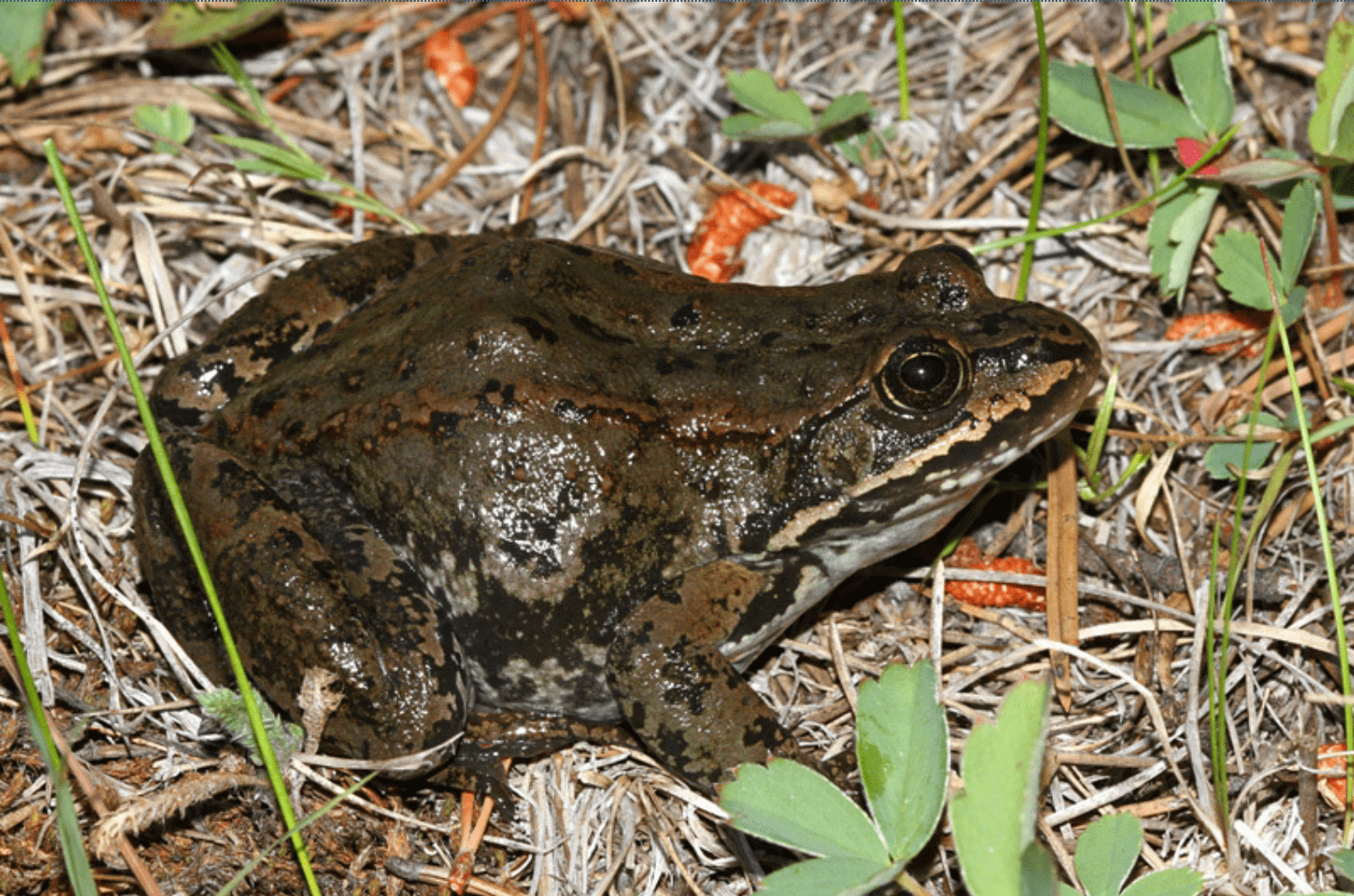
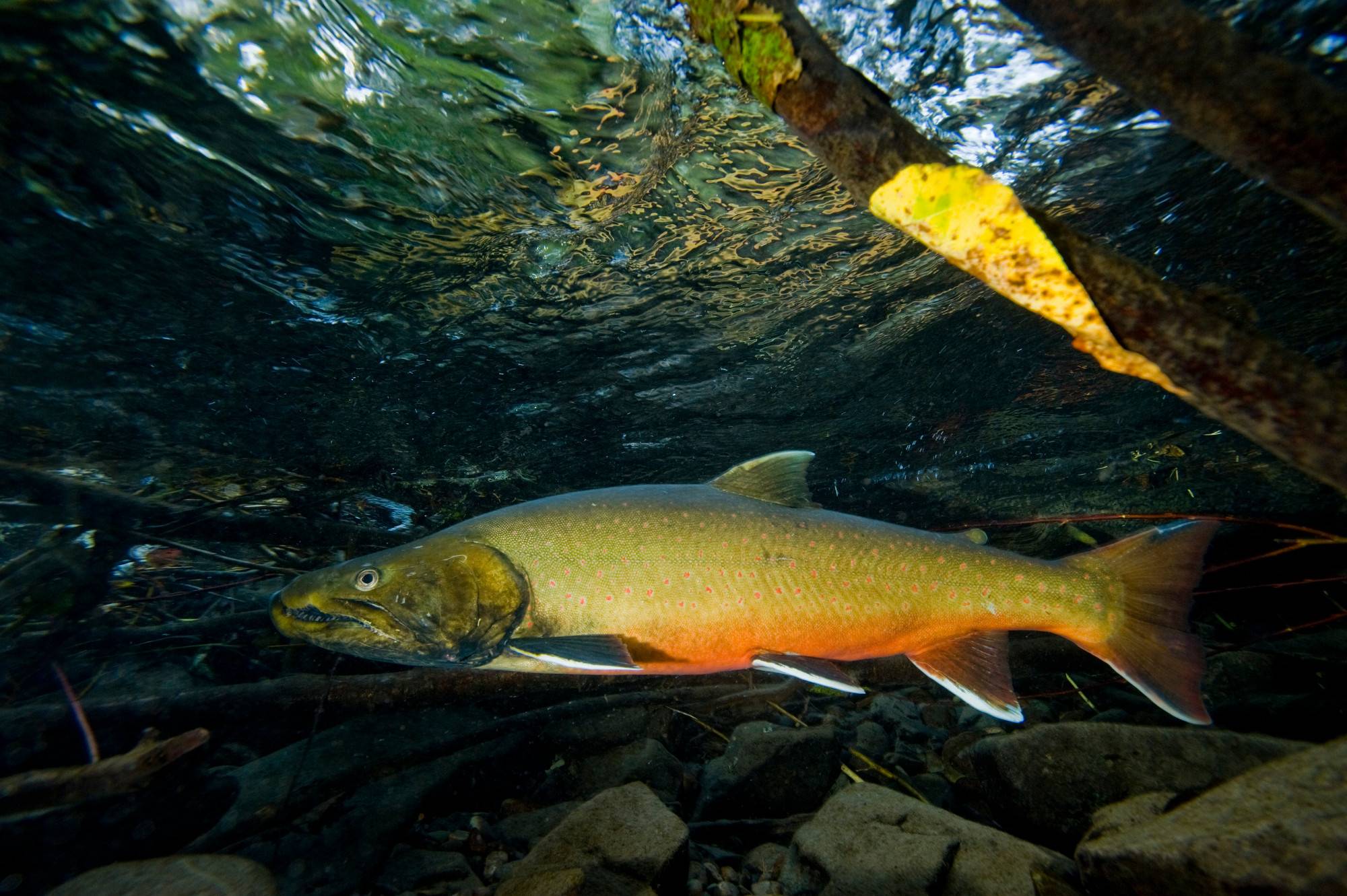
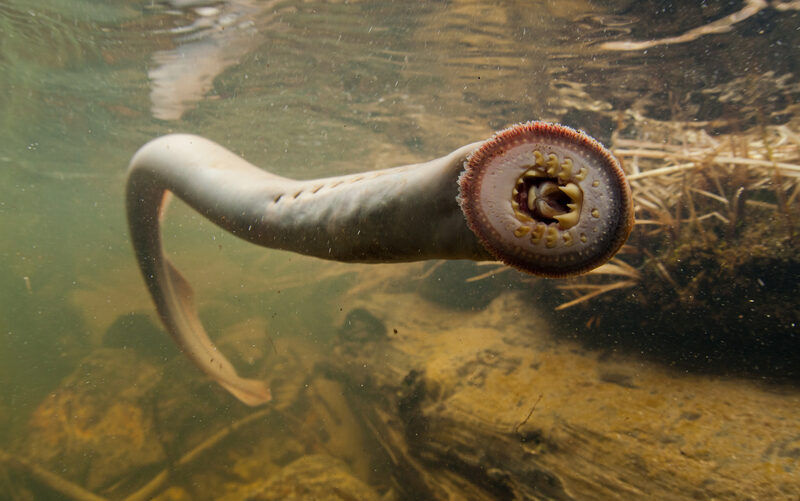
Waterways of Central Oregon

Deschutes River
Major river flowing through Central Oregon, home to redband trout and other native fish species.
Crooked River
A tributary of the Deschutes River, the Crooked River supports various fish species and riparian wildlife.
Metolius River
A spring-fed river known for its clear, cold water and excellent fly fishing for bull trout and kokanee.
Cascade Lakes
Series of high mountain lakes that provide habitat for various trout species and other aquatic life.
Salmon Life Cycle
Follow the remarkable journey of salmon in Central Oregon's rivers. Click through the stages to learn about their life cycle:
1. Eggs
Female salmon lay eggs in gravel nests called redds, where they're fertilized by males.
2. Alevin
After hatching, young fish called alevins remain in the gravel, feeding from attached yolk sacs.
3. Fry
When yolk sacs are depleted, young fish emerge from the gravel as fry and begin feeding independently.
4. Smolt
Smolts undergo physiological changes preparing them for life in saltwater as they migrate downstream.
5. Adult & Spawning
After maturing in the ocean, adults return to their birth streams to spawn, completing the cycle.
Flora
Central Oregon's diverse landscape supports a wide variety of plant communities, from high desert sagebrush to alpine wildflower meadows. The region's native plants have adapted to the area's unique climate and soil conditions.
Notable Plant Species
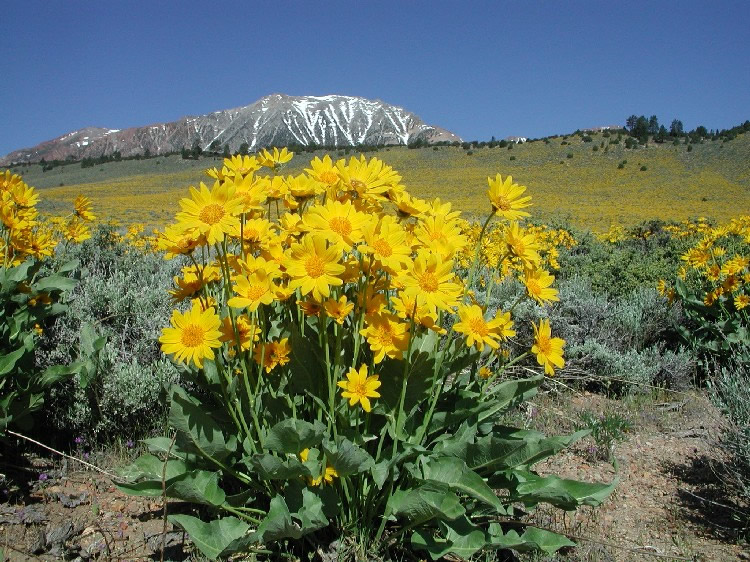
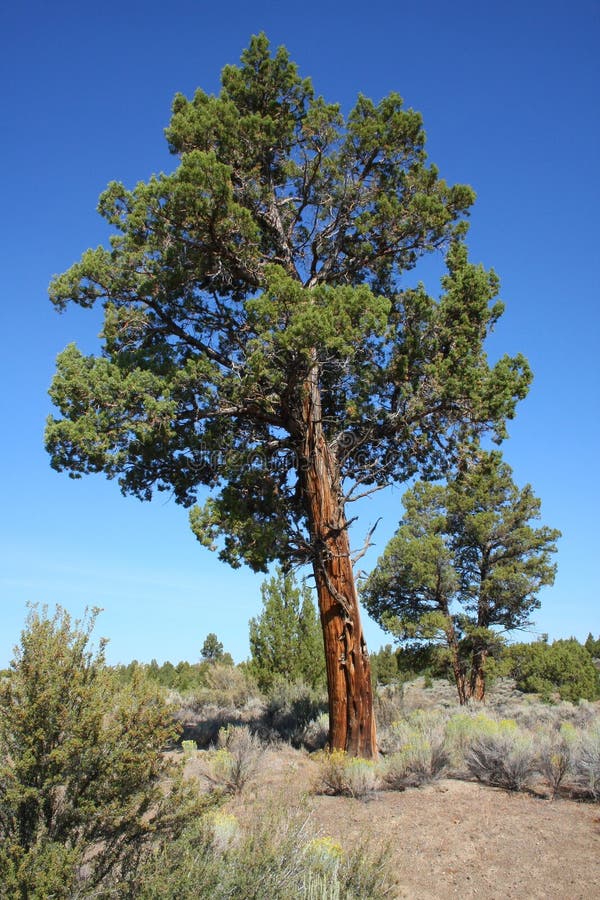
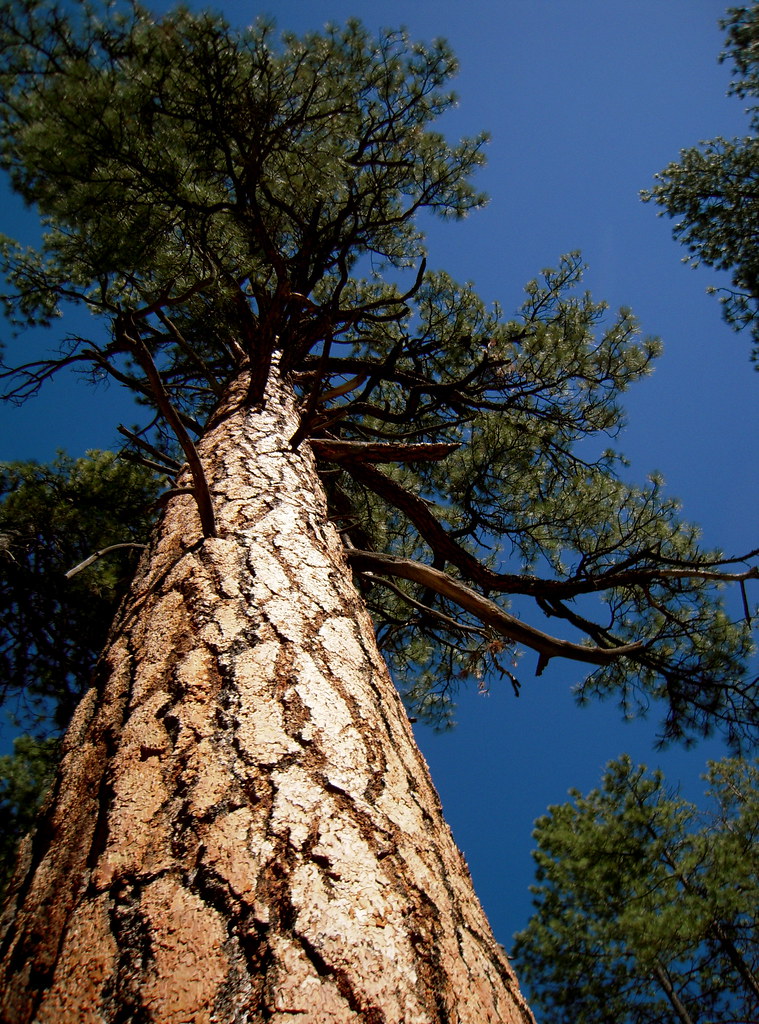
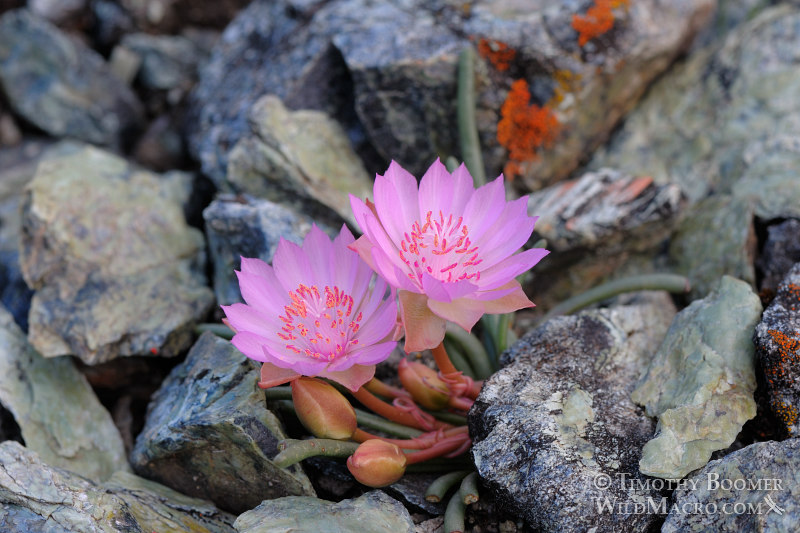
Wildflower Bloom Calendar
Central Oregon offers a changing palette of wildflowers throughout the growing season. Click on a season to see what's blooming:
Arrowleaf Balsamroot
Bright yellow sunflower-like blooms cover hillsides in April and May.
Oregon Grape
Clusters of bright yellow flowers bloom on this native shrub in early spring.
Desert Parsley
One of the earliest spring bloomers, with clusters of yellow flowers.
Scarlet Gilia
Bright red tubular flowers that attract hummingbirds, blooming in June.
Lupine
Various species with distinctive spikes of blue, purple, or white flowers.
Indian Paintbrush
Bright red or orange bracts surrounding small flowers, blooming in early summer.
Rabbitbrush
Bright yellow blooms that provide important late-season nectar for pollinators.
Aster
Purple, blue, or white flowers with yellow centers blooming in late summer.
Goldenrod
Tall plants with showy yellow flower clusters in August and September.
Western Yarrow
White flower clusters that can persist into fall months.
Pearly Everlasting
White papery flowers that last well into fall and winter.
Fall-blooming Rabbitbrush
Some species continue blooming into October, providing late-season color.
Plant Adaptations
Test Your Knowledge: Plant Adaptations
- Broad, thin leaves
- Shallow root systems
- Deep taproot systems
- Abundant seed production
Funga
The fungal kingdom plays a crucial but often overlooked role in Central Oregon's ecosystems. From mycorrhizal partnerships with plants to decomposition processes, fungi are essential components of healthy forest and grassland habitats.
Notable Fungi Species

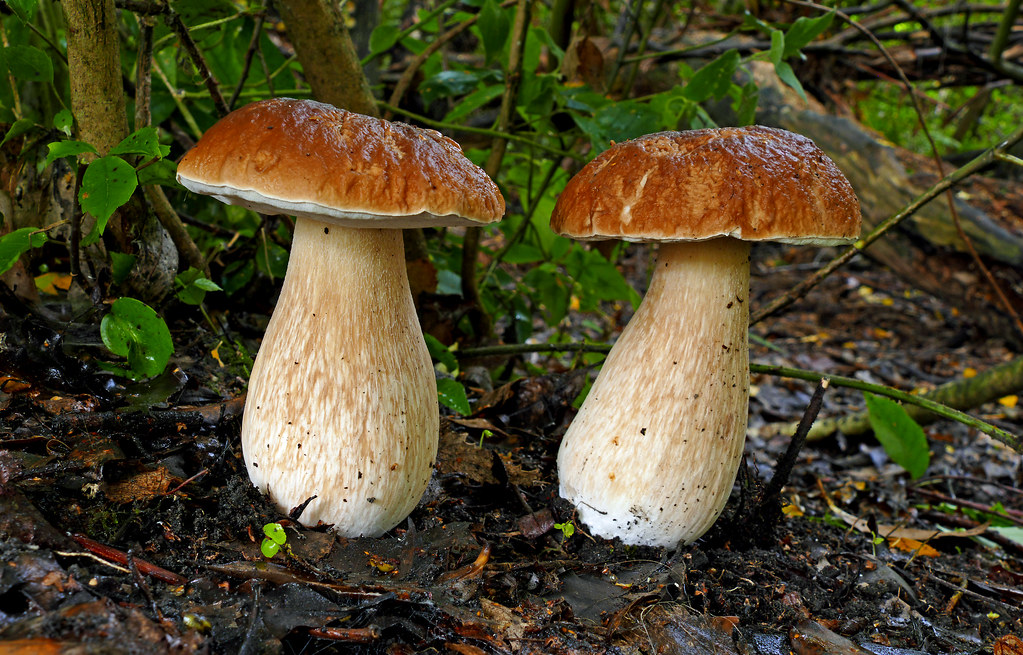
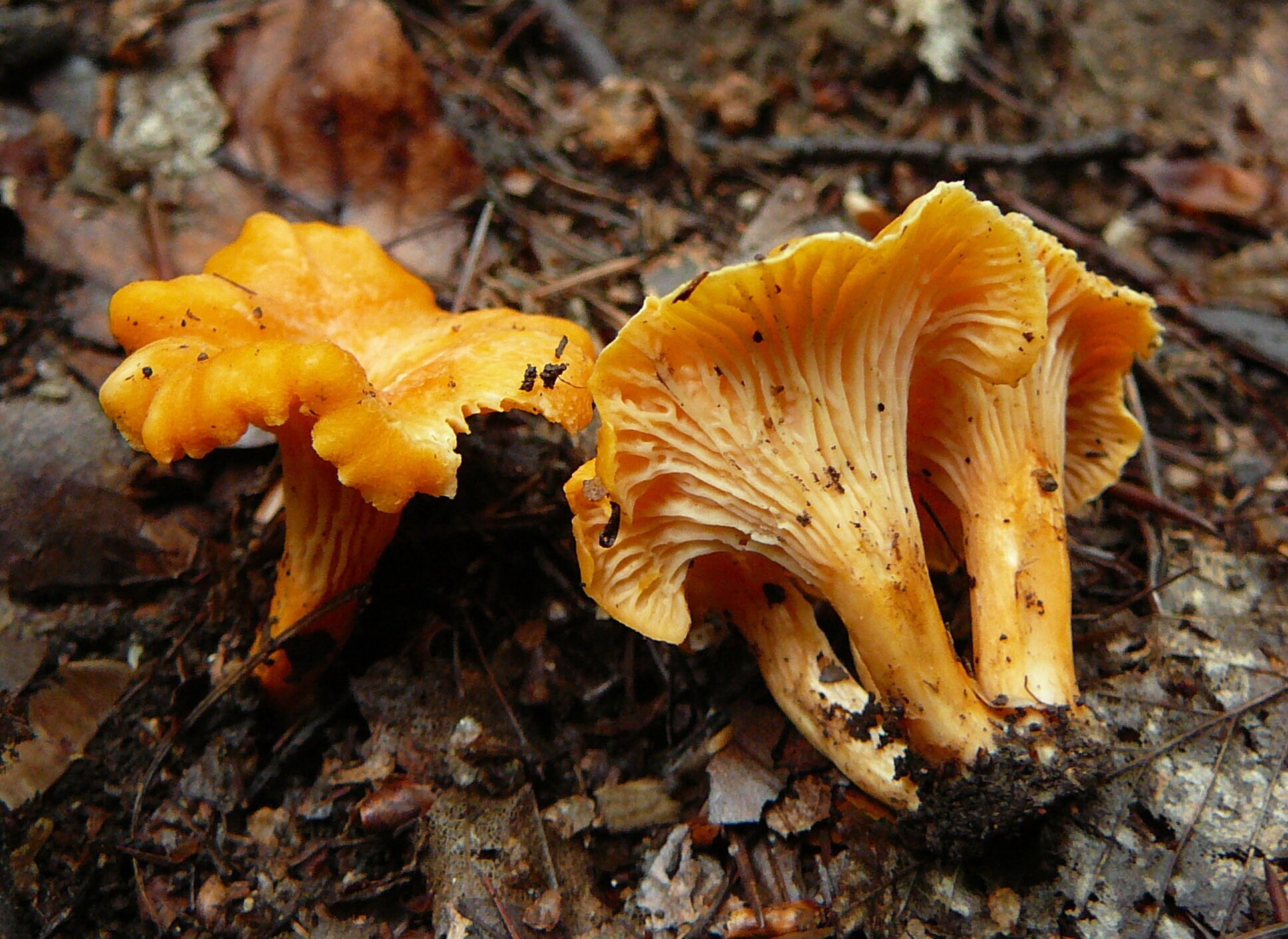
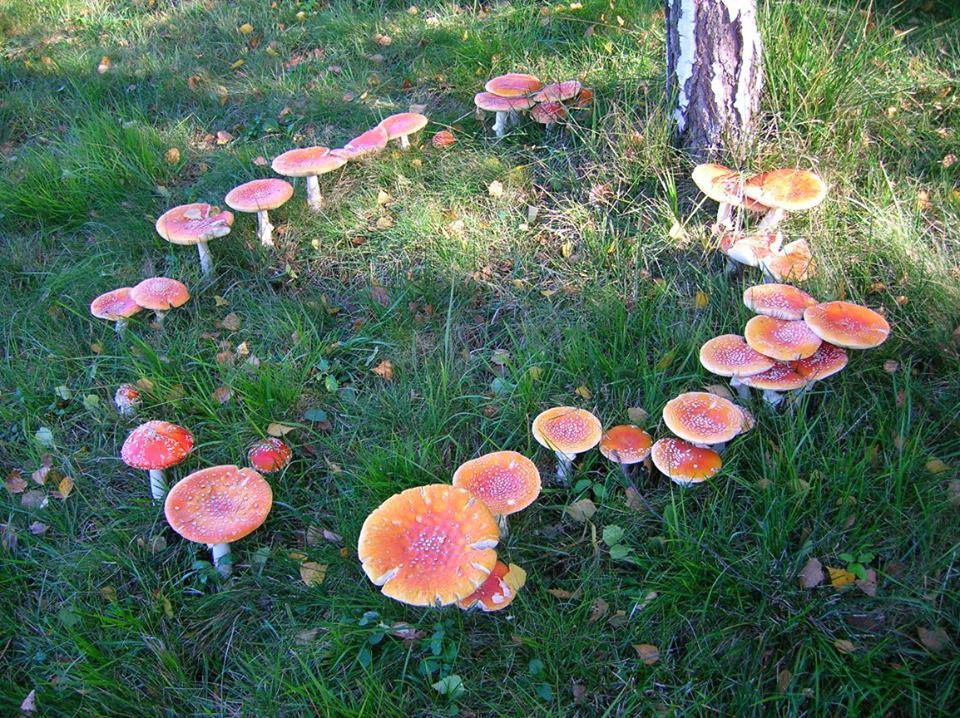
Mushroom Identification Guide
Important Safety Note: Never consume wild mushrooms without expert identification. This guide is for educational purposes only.
Select features to identify common Central Oregon mushrooms:
Morel Mushroom
Distinctive honeycomb pattern on cap, typically found in spring, especially in burned areas or disturbed soil.
Remember: This is for educational purposes only. Always consult with an expert mycologist before consuming any wild mushroom.
Ecological Roles of Fungi
Mycorrhizal Relationships
Fungi that form beneficial partnerships with plant roots, helping them absorb water and nutrients.
Decomposers
Fungi that break down dead organic matter, recycling nutrients back into the ecosystem.
Plant Pathogens
Fungi that cause disease in plants, playing a role in natural selection and forest succession.
Mycorrhizal Fungi: Forest Connectors
Over 90% of land plants form mycorrhizal relationships with fungi. In Central Oregon's forests, these relationships are crucial for plant survival in nutrient-poor soils.
Mycorrhizal fungi extend the reach of plant roots, increasing their surface area for water and nutrient absorption by up to 1,000 times. In exchange, plants provide fungi with carbohydrates produced through photosynthesis.
Recent research has revealed that mycorrhizal fungi create vast underground networks connecting trees and plants, sometimes called the "Wood Wide Web." Through these networks, plants can share resources and even communicate information about threats.
Decomposer Fungi: Nature's Recyclers
Decomposer fungi are essential for breaking down complex organic compounds like lignin and cellulose in dead wood and plant matter—materials that few other organisms can digest.
In Central Oregon's forests, fungi are the primary decomposers of fallen trees and woody debris. Without them, nutrients would remain locked in dead plant material, unavailable for new growth.
The cycle of decomposition creates rich forest soils and releases carbon back into the atmosphere. This process can take decades for large logs, creating long-term habitat for many forest creatures while gradually returning nutrients to the ecosystem.
Pathogenic Fungi: Agents of Change
While often viewed negatively, fungal pathogens play important ecological roles in forest dynamics. By attacking weakened or stressed trees, they can help maintain forest health and diversity.
Common fungal pathogens in Central Oregon include various root rots, rusts, and canker diseases. Some, like Armillaria (honey fungus), can spread throughout forest stands via underground rhizomorphs.
When pathogens create gaps in the forest canopy by killing trees, they allow sunlight to reach the forest floor, encouraging the growth of new seedlings and increasing forest diversity. This process is part of natural forest succession.
Insects
The insect world of Central Oregon is diverse and fascinating, playing crucial roles in pollination, decomposition, and as food sources for many animals. From butterflies to beetles, these small creatures are vital components of healthy ecosystems.
Notable Insect Species
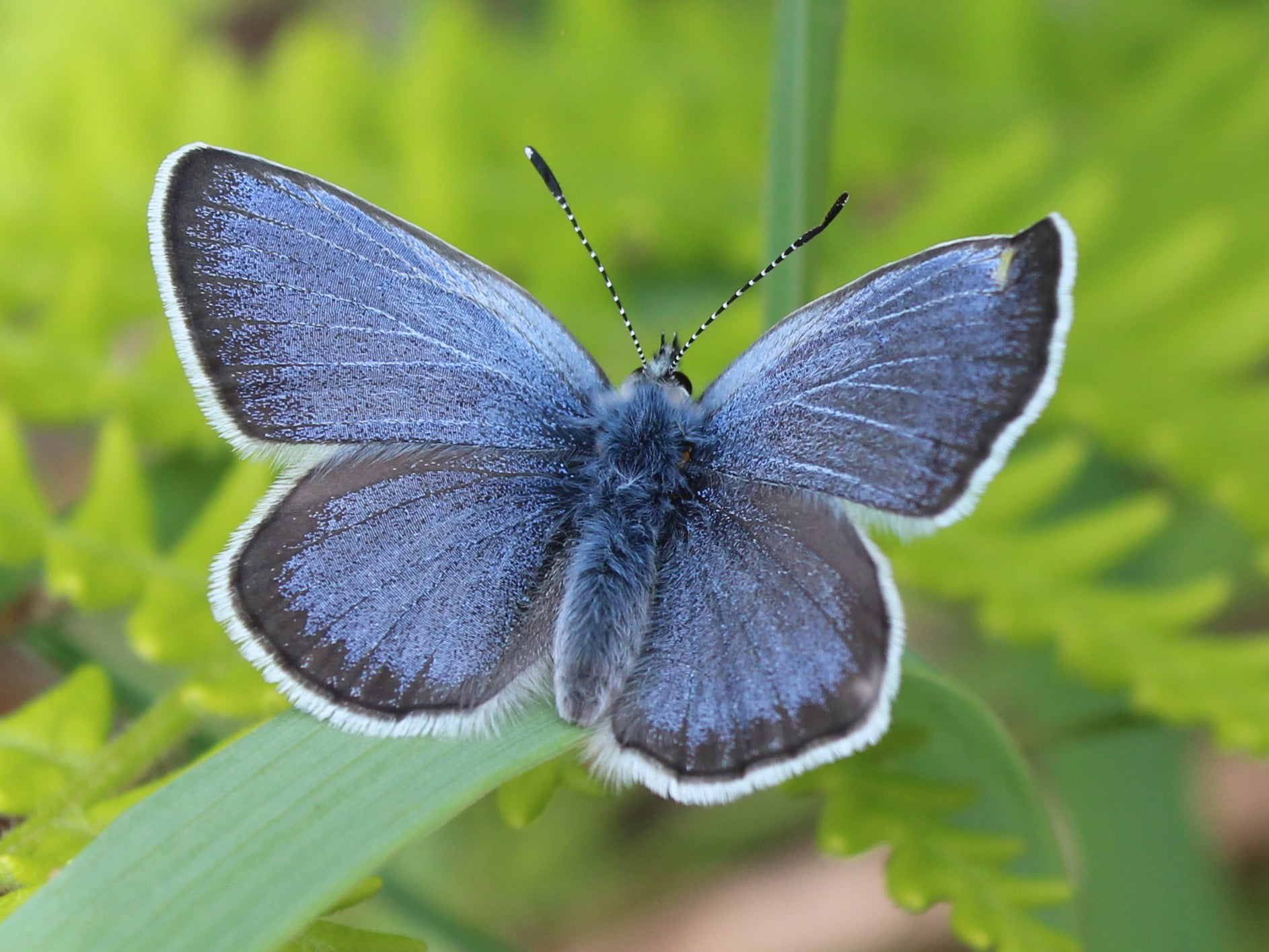
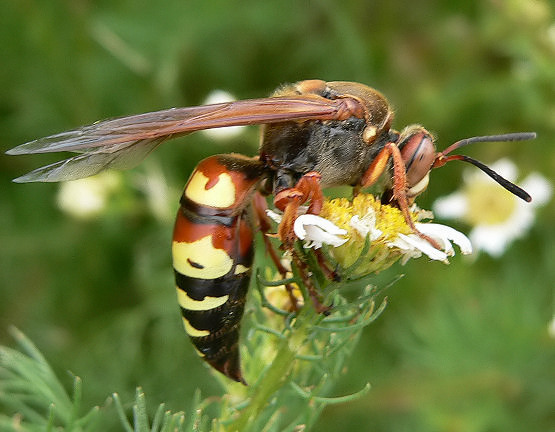
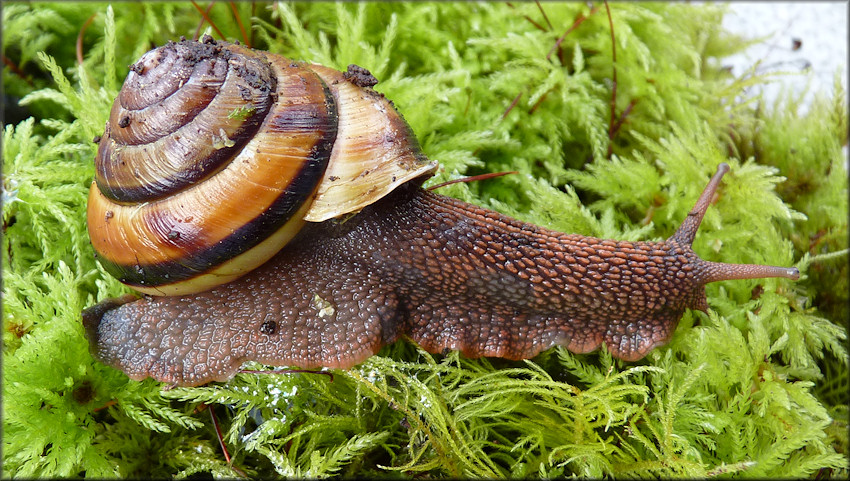
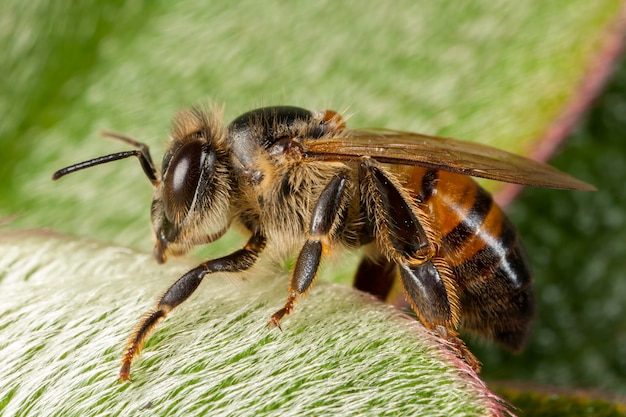
Important Pollinators
Pollinators are essential for plant reproduction, including many of the fruits and vegetables we eat. Central Oregon is home to diverse pollinator species. Click on a pollinator to learn more about its role:
Native Bees
Central Oregon hosts over 500 native bee species
Butterflies
Beautiful pollinators with complex life cycles
Hummingbirds
Specialized avian pollinators of tubular flowers
Native Bees: Essential Pollinators
While honeybees get much attention, Central Oregon's native bees are actually more efficient pollinators of many native plants and crops. Unlike honeybees, most native bees are solitary and don't live in hives.
Native bee species include mason bees, leafcutter bees, bumblebees, mining bees, and many others. Each has specialized relationships with particular plant species, often with physical adaptations that make them perfect pollinators for specific flowers.
You can support native bees by planting native flowering plants, providing nesting habitat like bare soil patches or bee houses, and avoiding pesticide use. Even small gardens can make a big difference for these crucial pollinators.
Butterflies: Flying Flowers
Central Oregon is home to dozens of butterfly species, from the tiny blue butterflies to larger swallowtails. Each species has a complex life cycle involving specific host plants for their caterpillars.
Butterflies are important pollinators, though generally less efficient than bees. They're particularly attracted to red, yellow, orange, pink, and purple flowers with flat landing pads and short floral tubes containing abundant nectar.
To support butterflies, plant both nectar plants for adults and host plants for caterpillars. Popular butterfly-attracting plants for Central Oregon include milkweed, aster, rabbitbrush, yarrow, and penstemon.
Hummingbirds: Aerial Acrobats
Central Oregon is visited by several hummingbird species, including the Rufous, Calliope, and Black-chinned hummingbirds. These tiny birds are specialized pollinators of tubular flowers, using their long bills and tongues to reach deep into blossoms for nectar.
Hummingbirds are particularly attracted to red, orange, and pink tubular flowers. While feeding, their foreheads become dusted with pollen, which they then transfer to the next flower they visit.
Native plants favored by hummingbirds in Central Oregon include columbine, penstemon, currant, scarlet gilia, and honeysuckle. Planting these species can help support these remarkable birds during breeding and migration seasons.
Insect Symphony
The sounds of insects create a natural symphony in Central Oregon. Click to listen to these common insect sounds:
Cricket Chorus
Evening sounds in summer
Cicada Buzz
Hot summer days
Buzzing Bees
Spring and summer pollination
Geology
Central Oregon's dramatic landscape has been shaped by volcanic activity, glaciation, and erosion over millions of years. The region offers a fascinating window into Earth's geological processes.
Notable Geological Features

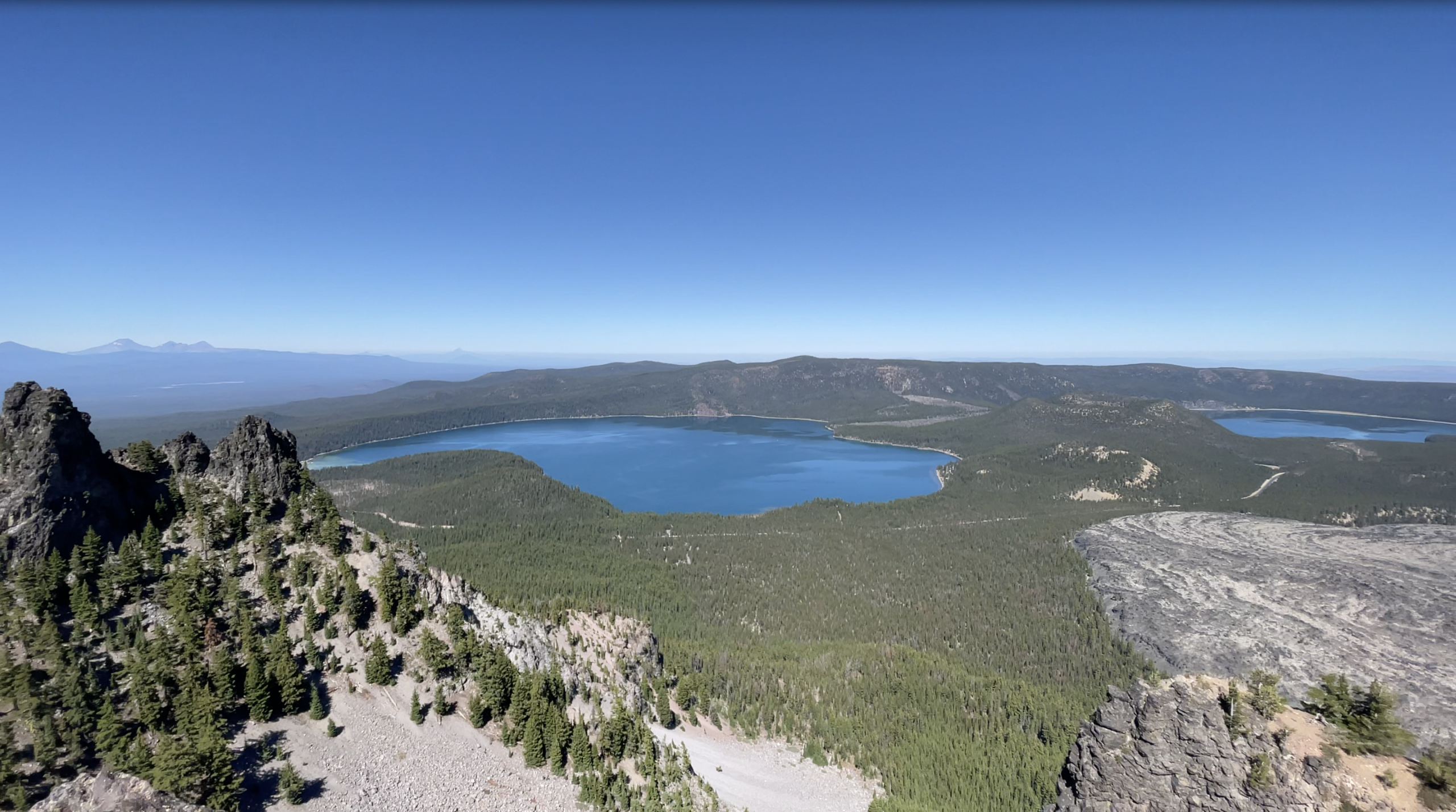
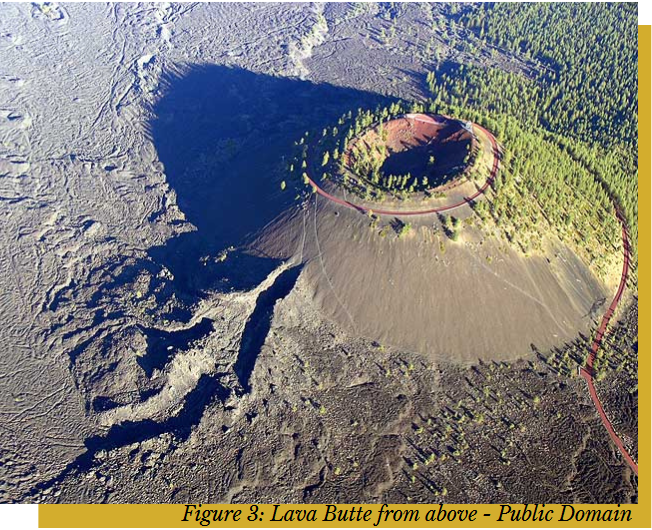
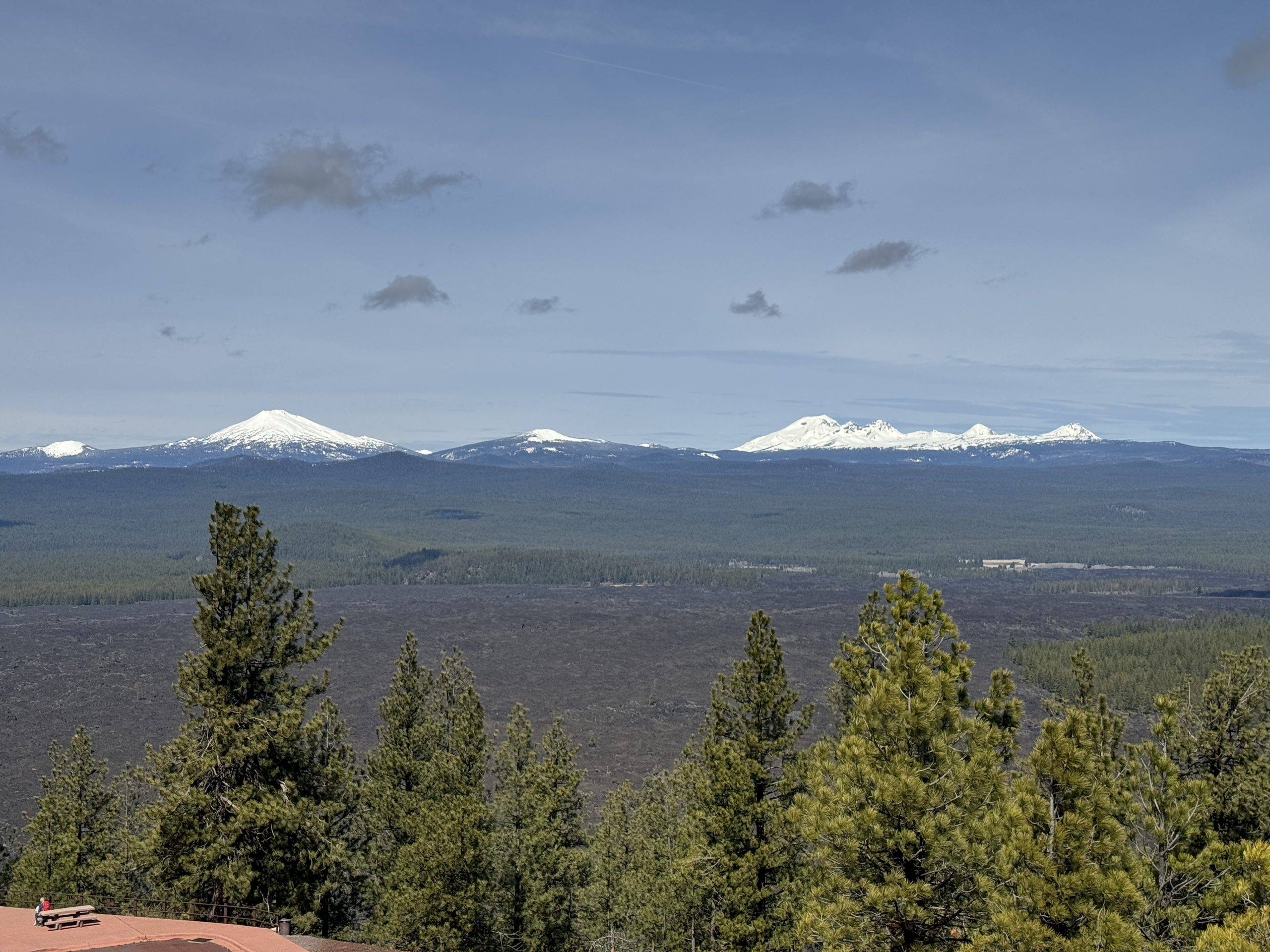
Geological Timeline
Explore key events in Central Oregon's geological history. Click on timeline points to learn more:
30-40 Million Years Ago
7-5 Million Years Ago
2 Million - 10,000 Years Ago
65,000 Years Ago
7,000 Years Ago - Present
Western Cascades Formation
30-40 million years ago, volcanic activity began building what would become the Western Cascades. The region was dominated by large shield volcanoes, with massive lava flows. Many of Central Oregon's older rock formations, including the Smith Rock tuff, were formed during this period. The ancient volcanoes of this era have been heavily eroded, leaving behind altered and weathered volcanic rocks.
High Cascades Development
Between 7 and 5 million years ago, volcanic activity shifted eastward, beginning to form the modern High Cascades. This period saw the emergence of large stratovolcanoes similar to those we see today. Significant lava flows from these volcanoes spread eastward, covering much of what is now Central Oregon with basalt. This era established the basic topographic framework of the region we see today.
Ice Age Glaciation
During the Pleistocene Epoch (2 million to 10,000 years ago), Central Oregon experienced multiple glacial periods. Massive ice fields covered the Cascade peaks, carving distinctive U-shaped valleys and sharp ridges. Glacial moraines, erratic boulders, and glacial lakes (like many in the Cascade Lakes region) are remnants of this period. The advance and retreat of these glaciers significantly shaped the landscape of the Cascade Range and influenced the hydrology of Central Oregon.
Newberry Caldera Formation
Approximately 65,000 years ago, a massive eruption and subsequent collapse of Newberry Volcano created the caldera we see today. This event dramatically altered the eastern landscape of Central Oregon. The caldera later filled with water, forming the present-day Paulina and East Lakes. Numerous smaller eruptions followed, creating obsidian flows, cinder cones, and lava tubes within and around the Newberry Volcanic National Monument.
Recent Volcanic Activity
The most recent significant volcanic activity in Central Oregon occurred approximately 7,000 years ago when Lava Butte erupted, creating a cinder cone and extensive lava flow that temporarily dammed the Deschutes River. Even more recently, about 1,300 years ago, the Big Obsidian Flow at Newberry Volcano formed, creating one of the youngest geological features in Oregon. Continuing volcanic and seismic monitoring reminds us that this landscape is still geologically active and evolving.
Common Rock Types
Basalt
Dark, fine-grained volcanic rock common throughout Central Oregon.
Obsidian
Volcanic glass formed when lava cools rapidly with minimal crystal growth.
Welded Tuff
Compressed volcanic ash, notable at Smith Rock State Park.
Basalt: Central Oregon's Foundation
Basalt is the most common rock type in Central Oregon, forming much of the region's foundation. This dark, fine-grained volcanic rock is rich in iron and magnesium, giving it its characteristic black to dark gray color.
Basalt forms when low-viscosity lava, typically erupting from shield volcanoes or fissures, cools relatively quickly. In Central Oregon, you can see impressive basalt formations at locations like the Deschutes River Canyon, Crooked River Gorge, and Lake Billy Chinook.
One distinctive feature of many basalt flows is columnar jointing—the hexagonal columns that form as the lava cools and contracts. Excellent examples can be seen at Palouse Falls and along many canyon walls in the region.
Obsidian: Nature's Glass
Obsidian is natural volcanic glass formed when silica-rich lava cools so rapidly that mineral crystals don't have time to grow. The result is a smooth, glassy rock with a conchoidal (shell-like) fracture that can create extremely sharp edges.
Central Oregon is home to some of North America's most significant obsidian flows, particularly at Newberry Volcano's Big Obsidian Flow—one of the youngest geologic features in Oregon at approximately 1,300 years old.
Indigenous peoples throughout the region prized obsidian for toolmaking, using it to create sharp cutting tools, projectile points, and ceremonial objects. Archaeological evidence shows obsidian from Central Oregon was traded widely across the Pacific Northwest.
Welded Tuff: Compressed Volcanic Ash
Welded tuff forms when hot volcanic ash and pumice fragments are ejected during explosive eruptions and then settle while still hot enough to fuse together. This process creates a solid rock from what was once airborne volcanic material.
Smith Rock State Park showcases one of Central Oregon's most dramatic welded tuff formations. The towering cliffs, popular with rock climbers worldwide, are composed of welded tuff from an enormous volcanic eruption approximately 30 million years ago.
The distinctive orange-buff color of many tuff formations comes from the oxidation of iron compounds in the rock. Welded tuffs often contain visible fragments of darker rock and pumice, giving them a characteristic speckled appearance.
Ecology
Central Oregon encompasses several distinct ecological systems, from high desert sagebrush steppe to alpine forests. These diverse ecosystems support unique communities of plants and animals adapted to specific environmental conditions.
Major Ecosystems
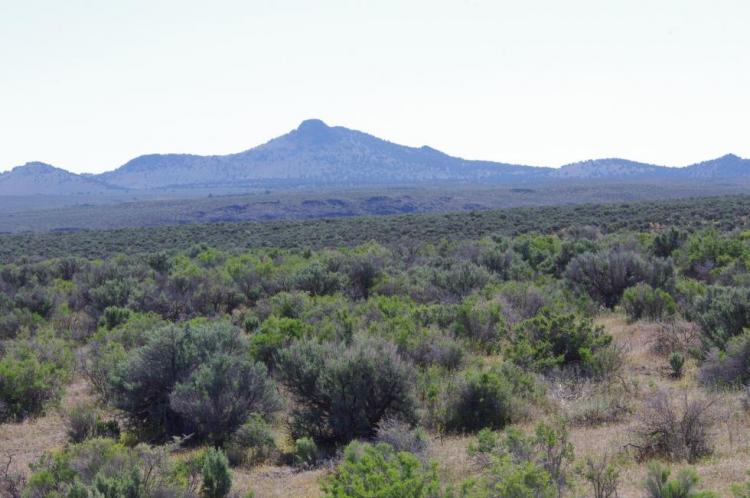
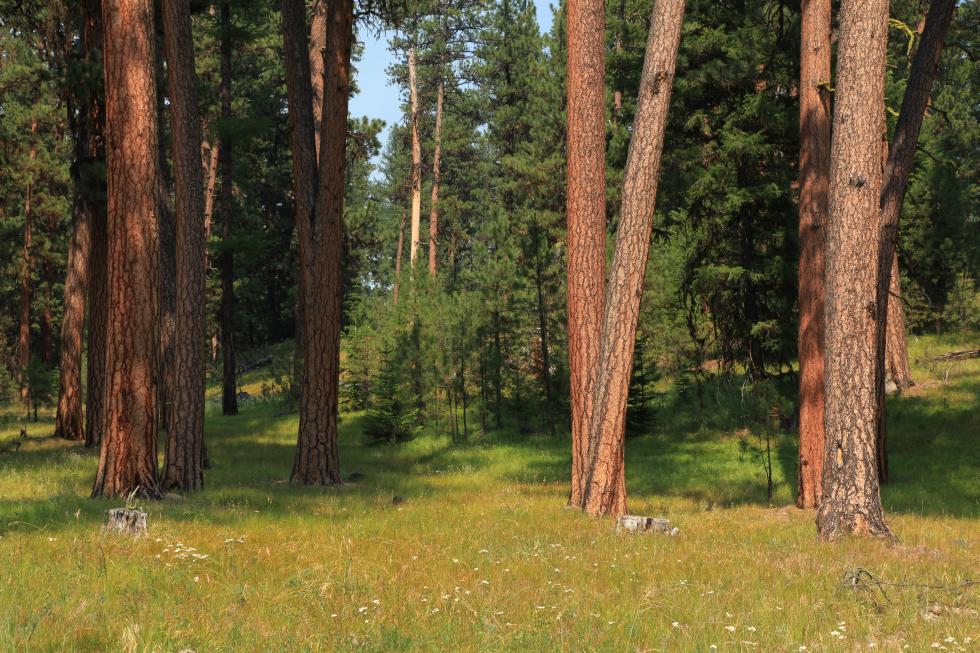
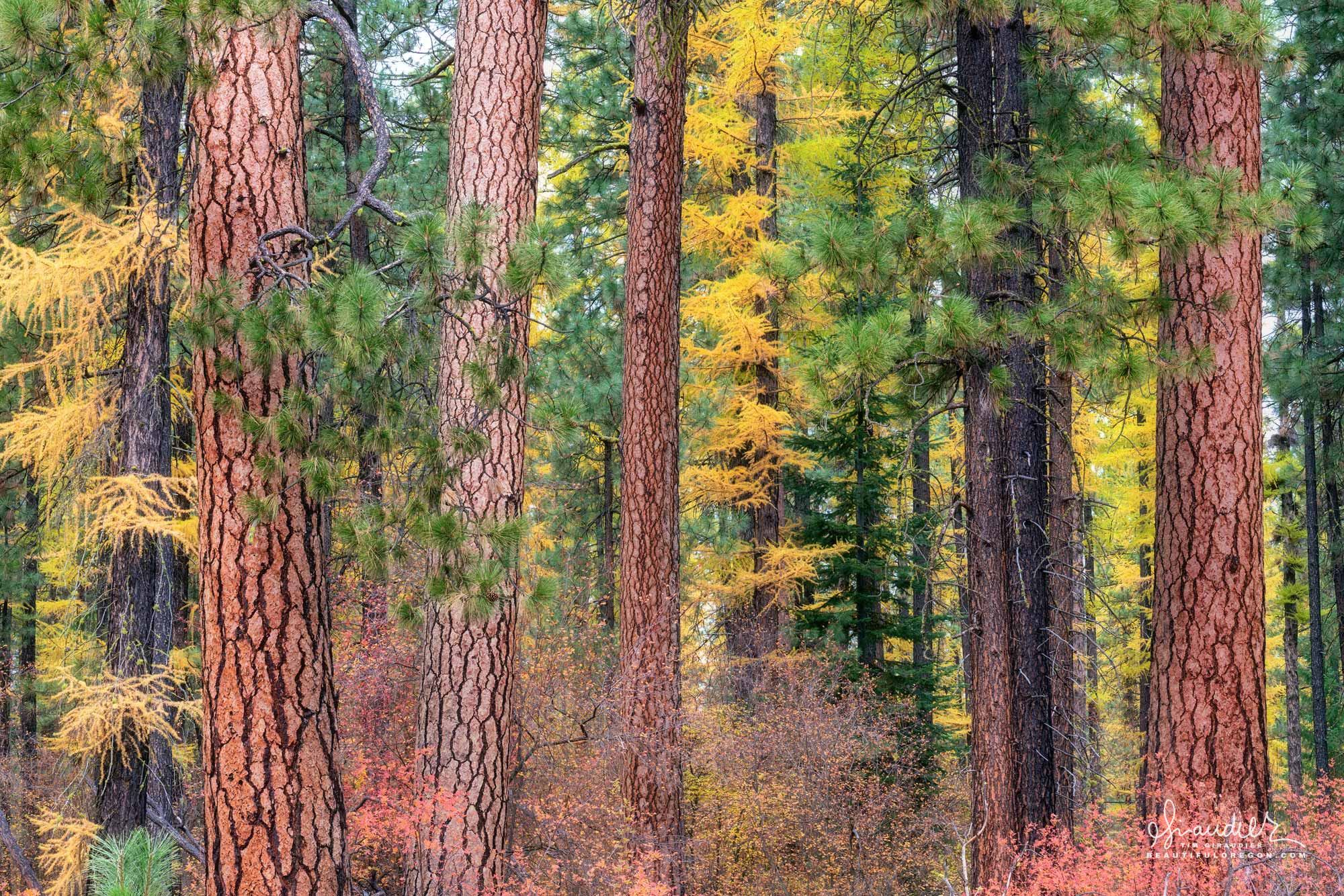
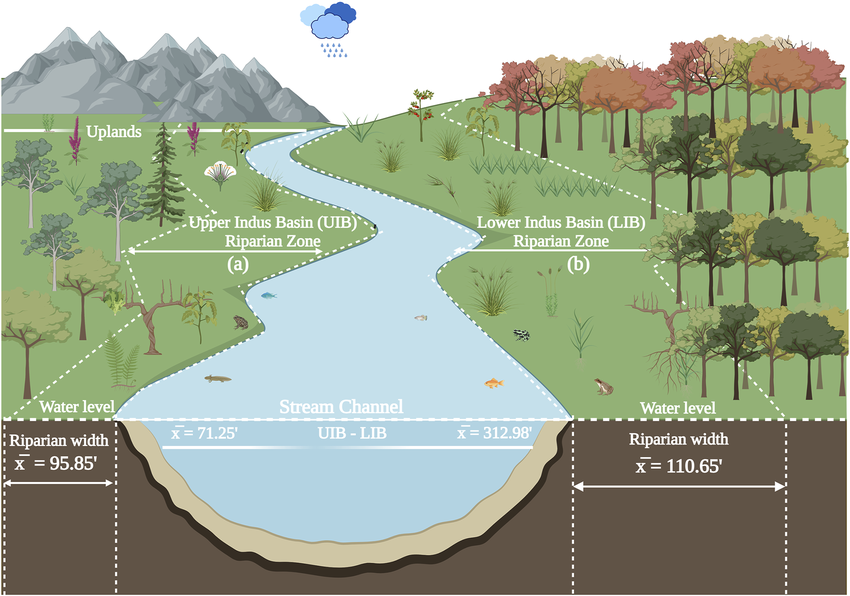
Ecological Relationships
Explore the interconnected relationships in a Central Oregon forest ecosystem. Click on elements to learn more about their roles and relationships:

Trees: Ecosystem Engineers
Trees are the foundation of forest ecosystems in Central Oregon. Ponderosa pines, Douglas firs, and other conifers provide habitat for countless species, from cavity-nesting birds to canopy-dwelling insects. Their roots stabilize soil and prevent erosion, while their canopies moderate the forest microclimate. Through photosynthesis, trees capture carbon dioxide and release oxygen, playing a crucial role in carbon sequestration. When trees die, they continue to contribute to the ecosystem as snags (standing dead trees) and later as fallen logs that provide habitat and slowly release nutrients back into the soil.
Soil: The Living Foundation
Forest soils in Central Oregon are complex living systems containing billions of microorganisms in every handful. These soils develop slowly over centuries as organic matter decomposes and minerals weather from parent rock material. Fungi, bacteria, insects, and other decomposers break down dead plant and animal material, recycling nutrients for use by living plants. The volcanic history of Central Oregon has created unique soil types rich in certain minerals but sometimes lacking in others. Forest soils also act as massive water filters and storage systems, helping to regulate water flow and quality throughout the ecosystem.
Wildlife: Dynamic Interactions
Animals in Central Oregon's forests interact with the ecosystem in countless ways. Herbivores like deer and elk shape plant communities through their feeding patterns. Carnivores like cougars and coyotes regulate herbivore populations. Seed-eating animals like squirrels and jays inadvertently plant trees when they cache seeds and forget some caches. Beavers create wetlands through dam-building, completely transforming local hydrology. Woodpeckers create nesting cavities that are later used by other species. Even the smallest animals—from pollinating insects to soil arthropods—play crucial roles in maintaining ecosystem health and function through their daily activities.
Water: The Flowing Lifeblood
Water is the lifeblood of Central Oregon's ecosystems, shaping landscapes and supporting all life. In forest systems, water moves from precipitation through canopy, understory, soil, groundwater, and eventually to streams and rivers. The region's volcanic geology creates unique hydrological features, including springs where water emerges after traveling underground through lava tubes and porous rock. Riparian areas along waterways support exceptionally high biodiversity, creating transition zones between aquatic and terrestrial ecosystems. Central Oregon's water resources are heavily influenced by mountain snowpack, with seasonal runoff patterns that many species have evolved to depend upon.
Fire Ecology
Fire has shaped Central Oregon's landscapes for millennia. Learn how different ecosystems respond to and depend on fire:
Fire regimes describe the pattern, frequency, and intensity of wildfires that typically occur in an ecosystem over time. Central Oregon's ecosystems have evolved with specific fire regimes:
- Frequent, Low-intensity Fires: Historically common in ponderosa pine forests, occurring every 5-25 years. These surface fires cleared understory vegetation while mature trees with thick bark survived.
- Mixed-severity Fires: Typical in mixed conifer forests, combining patches of high and low intensity, creating diverse habitat mosaics.
- Infrequent, High-intensity Fires: More common in dense, higher-elevation forests where fires might only occur every 100+ years but can be stand-replacing events.
Indigenous peoples in Central Oregon actively managed landscapes with intentional burning for thousands of years, maintaining healthier forests and fostering food-producing plants like huckleberries and camas.
Plants and animals in Central Oregon have evolved various adaptations to survive and even thrive with periodic fires:
- Thick Bark: Mature ponderosa pines develop thick, platy bark that insulates the living cambium from heat.
- Self-pruning: Ponderosa pines naturally shed lower branches, reducing "ladder fuels" that could carry fire into the canopy.
- Serotinous Cones: Some lodgepole pines have cones that remain closed until the heat of a fire melts the resin seal, releasing seeds into newly cleared, nutrient-rich soil.
- Resprouting: Many shrubs, like manzanita and snowberry, can resprout from their root crown after being burned above ground.
- Fire-stimulated Germination: Seeds of certain species, including some manzanitas and ceanothus, require the heat or smoke from fire to break dormancy and germinate.
Some wildlife species, like black-backed woodpeckers, specifically seek out recently burned forests to feed on bark beetles that colonize fire-killed trees.
Fire management in Central Oregon has evolved significantly over time:
- Historical Fire Suppression: For much of the 20th century, all fires were aggressively suppressed, allowing fuels to accumulate in many forest types.
- Ecological Consequences: Decades of fire suppression have created denser forests with more uniform structure, increasing vulnerability to large, high-severity fires.
- Prescribed Fire: Controlled burns are increasingly used to reduce fuels and restore fire's ecological role under safe conditions.
- Mechanical Treatments: Thinning and mowing reduce fuel loads in strategic areas, especially near communities in the wildland-urban interface.
- Cultural Burning: There's growing recognition and restoration of indigenous burning practices that shaped landscapes for millennia.
Modern fire management increasingly embraces the concept of "pyrodiversity"—the idea that a mosaic of different fire histories across the landscape supports greater biodiversity and ecosystem resilience.
Forest Fire Simulation
See how forest density affects fire behavior. Click the buttons to observe different scenarios:

Natural Ponderosa Pine Forest
Widely spaced trees with grassy understory allow frequent, low-intensity fires that clear ground fuels without harming mature trees.

Fire Behavior
In natural conditions, fires typically remain on the forest floor, moving quickly but with low flame heights. Most mature trees survive these fires.

Overgrown Forest
After decades without fire, forests become densely packed with trees and understory vegetation, creating continuous fuel from ground to canopy.

Fire Behavior
In overgrown conditions, fires can climb into tree canopies, creating high-intensity crown fires that kill most trees and can be extremely difficult to control.

Thinned Forest
Selective thinning and prescribed fire can restore more natural forest structure, reducing the risk of high-severity wildfire.

Fire Behavior
In properly managed forests, fires typically remain on the ground and can be beneficial for forest health, recycling nutrients and maintaining habitat diversity.
Night Sky
Central Oregon's clear air and low light pollution make it an exceptional place for stargazing. From the Milky Way to meteor showers, the night skies here offer spectacular celestial displays throughout the year.
Central Oregon's Dark Skies
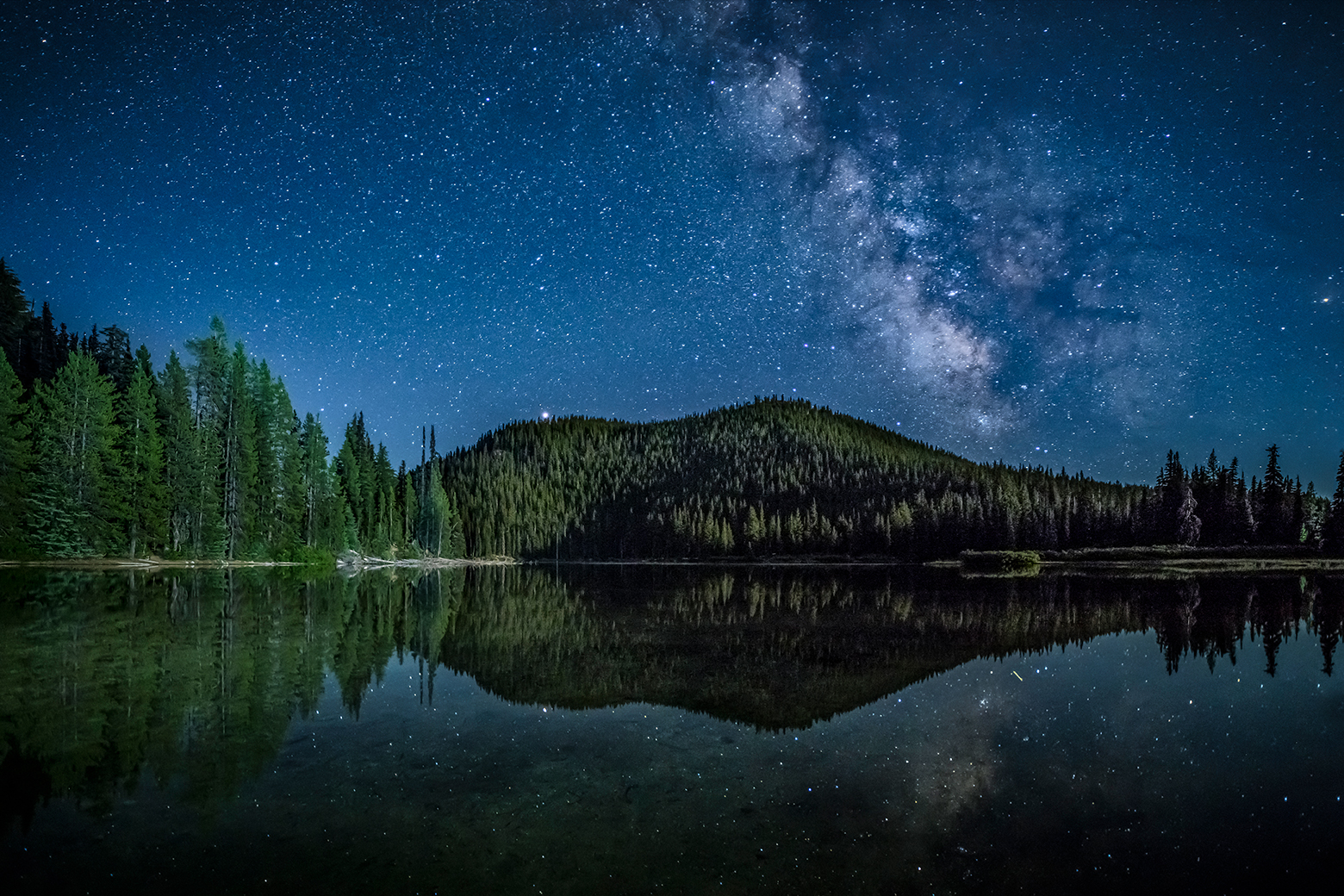
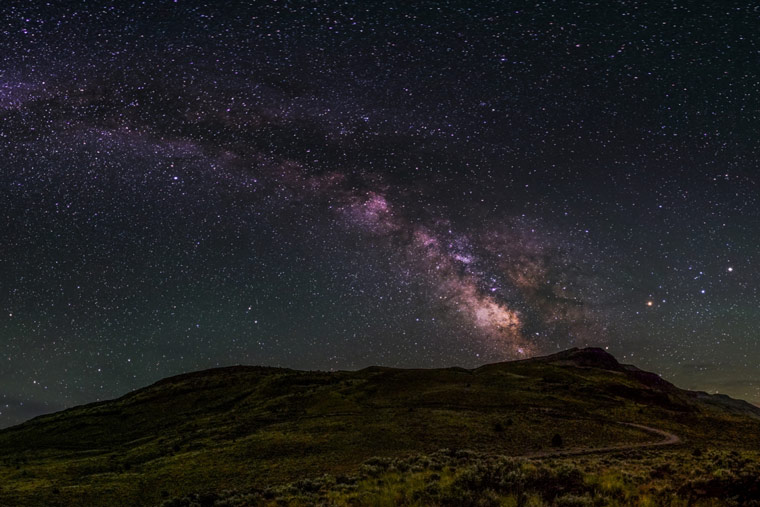

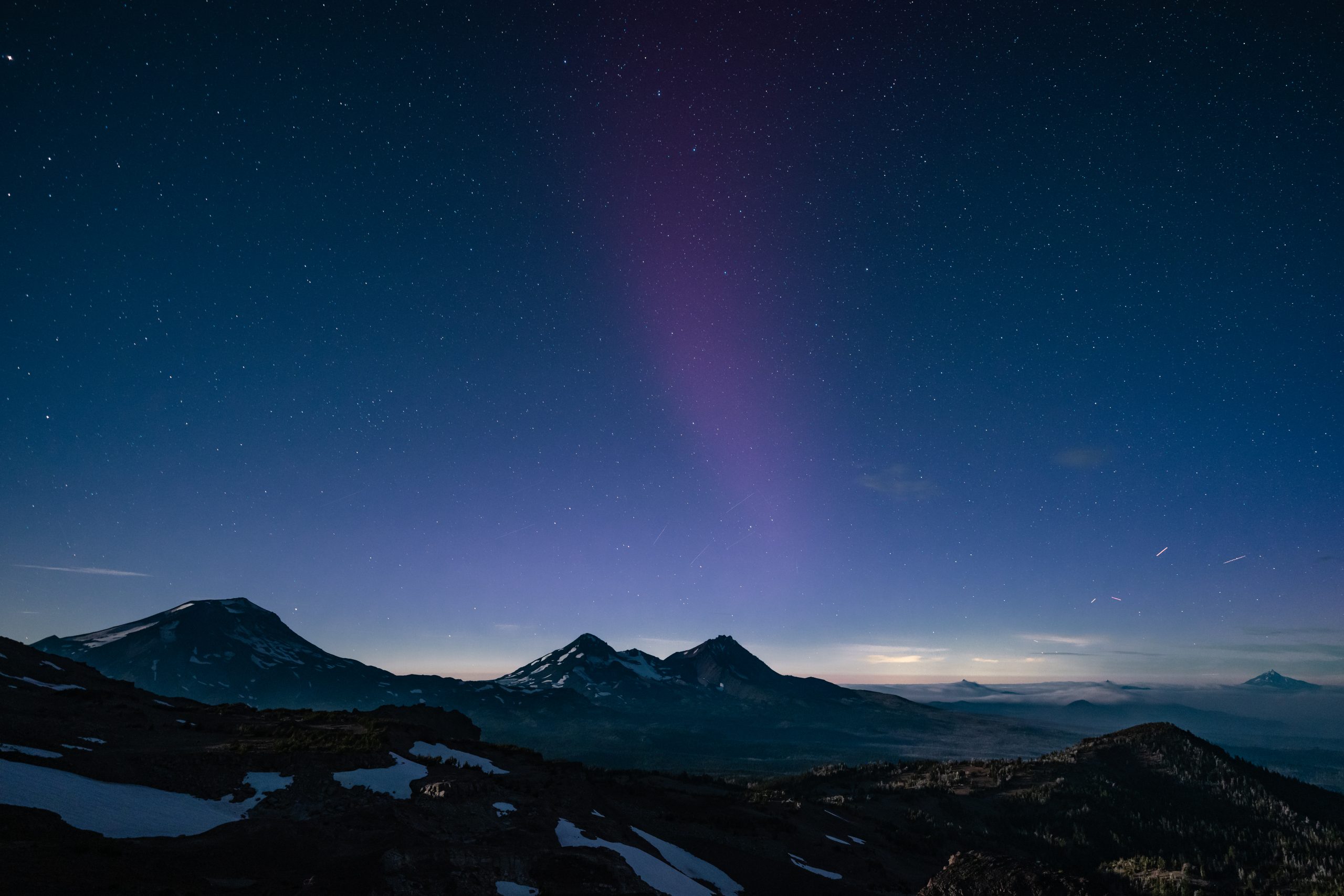
Seasonal Stargazing Guide
Different seasons offer unique celestial viewing opportunities in Central Oregon. Select a season to see what's visible:
Spring Night Sky (March-May)
Visible Constellations:
- Leo (the Lion)
- Virgo (the Maiden)
- Boötes (the Herdsman)
- Ursa Major (the Great Bear)
- Coma Berenices (Berenice's Hair)
Celestial Events:
- Lyrid Meteor Shower (April)
- Eta Aquarids Meteor Shower (May)
- Mars often visible in evening sky
Spring Stargazing Tips:
Spring offers moderate temperatures for comfortable viewing. Look for the Big Dipper high in the northern sky—follow the handle's arc to "Arc to Arcturus" (in Boötes) and then "Speed on to Spica" (in Virgo).
The area between Leo and Virgo contains the Virgo Cluster of galaxies—though you'll need binoculars or a telescope to see them. The "Realm of the Galaxies" is most prominent in spring skies.
Summer Night Sky (June-August)
Visible Constellations:
- Sagittarius (the Archer)
- Scorpius (the Scorpion)
- Cygnus (the Swan)
- Lyra (the Lyre)
- Aquila (the Eagle)
Celestial Events:
- Perseid Meteor Shower (August)
- Core of Milky Way high in the sky
- Saturn and Jupiter rising late evening
Summer Stargazing Tips:
Summer offers the most spectacular Milky Way viewing as the galactic center rises in the south. Look for the "teapot" shape of Sagittarius—the Milky Way appears to be steam rising from the spout.
The "Summer Triangle" formed by the bright stars Vega (in Lyra), Deneb (in Cygnus), and Altair (in Aquila) dominates the overhead sky. Central Oregon's warm, dry summer nights are perfect for extended viewing sessions.
Autumn Night Sky (September-November)
Visible Constellations:
- Pegasus (the Winged Horse)
- Andromeda (the Princess)
- Cassiopeia (the Queen)
- Perseus (the Hero)
- Aquarius (the Water Bearer)
Celestial Events:
- Orionid Meteor Shower (October)
- Leonid Meteor Shower (November)
- Andromeda Galaxy easily visible
Autumn Stargazing Tips:
Autumn brings earlier sunsets and typically clear skies in Central Oregon. Look for the "Great Square of Pegasus"—an unmistakable square of four stars high in the evening sky.
From a dark site, you can spot the Andromeda Galaxy (M31) with the naked eye as a fuzzy patch extending from the Andromeda constellation. It's the most distant object visible to the unaided human eye at 2.5 million light-years away.
Winter Night Sky (December-February)
Visible Constellations:
- Orion (the Hunter)
- Taurus (the Bull)
- Gemini (the Twins)
- Canis Major (the Great Dog)
- Auriga (the Charioteer)
Celestial Events:
- Geminid Meteor Shower (December)
- Quadrantid Meteor Shower (January)
- Orion Nebula easily visible
Winter Stargazing Tips:
Winter nights feature the brightest stars in the sky, including Sirius (the Dog Star), Capella, Rigel, and Betelgeuse. The distinctive hourglass shape of Orion dominates the southern sky.
Central Oregon's winter nights are cold but often exceptionally clear, offering stunning views. The Pleiades (Seven Sisters) star cluster in Taurus is a beautiful naked-eye target. Dress in multiple layers and bring hot beverages for comfort during winter stargazing.
Dark Sky Preservation
Dark skies are more than just a beautiful sight—they're an increasingly rare natural resource with significant ecological, cultural, and scientific value:
- Ecological Importance: Excessive artificial light disrupts nocturnal wildlife, affecting everything from bird migration to insect populations and plant flowering cycles.
- Human Health: Light pollution interferes with our circadian rhythms, potentially contributing to sleep disorders and health issues.
- Cultural Heritage: The night sky has inspired human art, mythology, and navigation for thousands of years—a connection increasingly lost to urban populations.
- Energy Conservation: Reducing unnecessary lighting saves energy and reduces carbon emissions.
- Astronomical Research: Professional and amateur astronomers require dark skies for observation and discovery.
Central Oregon's relatively dark skies are a precious resource that contributes to the region's character and appeal for both residents and visitors.
Central Oregon is home to several recognized dark sky locations:
- Oregon Outback International Dark Sky Sanctuary: This designation, granted in 2024, created the largest dark sky sanctuary in the world—spanning over 2.5 million acres in Lake County.
- Prineville Reservoir State Park: Oregon's first designated International Dark Sky Park, offering ranger-led stargazing programs during summer months.
- Sunriver Nature Center & Observatory: Features public viewing through multiple telescopes and educational programs about the night sky.
- Pine Mountain Observatory: Operated by the University of Oregon, this research facility east of Bend offers public viewing nights from May through September.
These designations help protect dark skies through lighting ordinances, public education, and awareness programs.
Everyone can contribute to preserving dark skies for future generations:
- Use Dark Sky Friendly Lighting: Choose fully-shielded light fixtures that direct light downward, not into the sky.
- Use Warm-colored Lights: LED lights with color temperatures of 3000K or less have less impact on wildlife and sky glow.
- Install Motion Sensors: Lights that only activate when needed reduce unnecessary illumination.
- Turn Off Unnecessary Lights: If you don't need outdoor lighting for safety or navigation, turn it off.
- Advocate Locally: Support dark sky friendly lighting ordinances in your community.
- Educate Others: Share the importance of dark skies with friends, family, and neighbors.
By taking these simple steps, you can help ensure that the awe-inspiring night skies of Central Oregon remain visible for generations to come.
Light Pollution Demonstration
See how different lighting affects night sky visibility. Drag the slider to compare:

Drag the slider left and right to see the difference
Did You Know?
Central Oregon's Smith Rock is considered the birthplace of modern American sport climbing, with the first 5.14 climb in the United States established there in 1986.
Videos from our time working at Glacier National Park; meant for kiddos.
Through Recreation
Join us on a journey that enriches your spirit, strengthens communities, and deepens our collective connection to the great outdoors. Discover how embracing outdoor adventures can lead to personal growth, sustainable practices, and meaningful fulfillment for individuals, organizations, and agencies alike.

Your Monthly Guide to Outdoor Adventures, Education, & Stewardship 🌀
🏔️🌲 Get outdoor recreation tips, must-know trails, and local folklore—straight to your inbox.
Are you ready to simplify your adventures, connect with community, and pursue personal growth through outdoor recreation?
